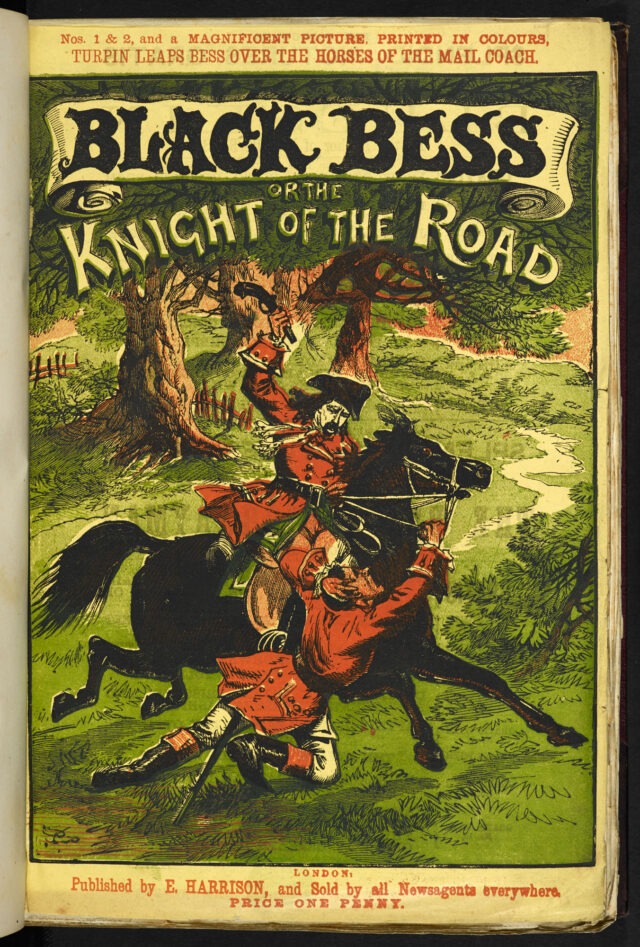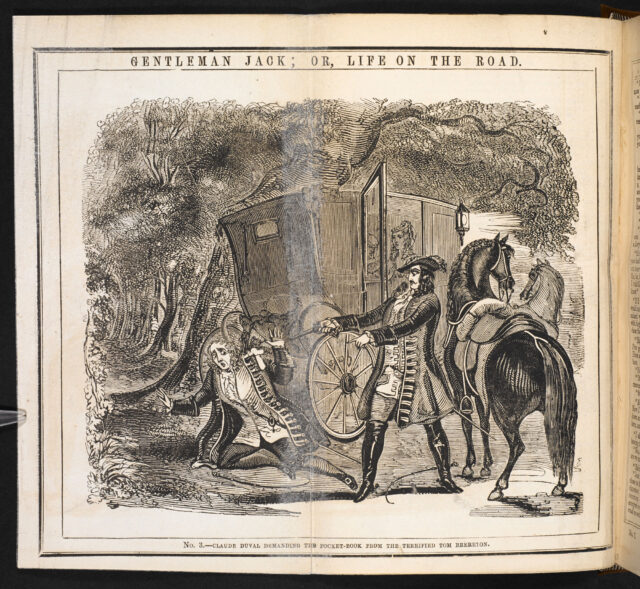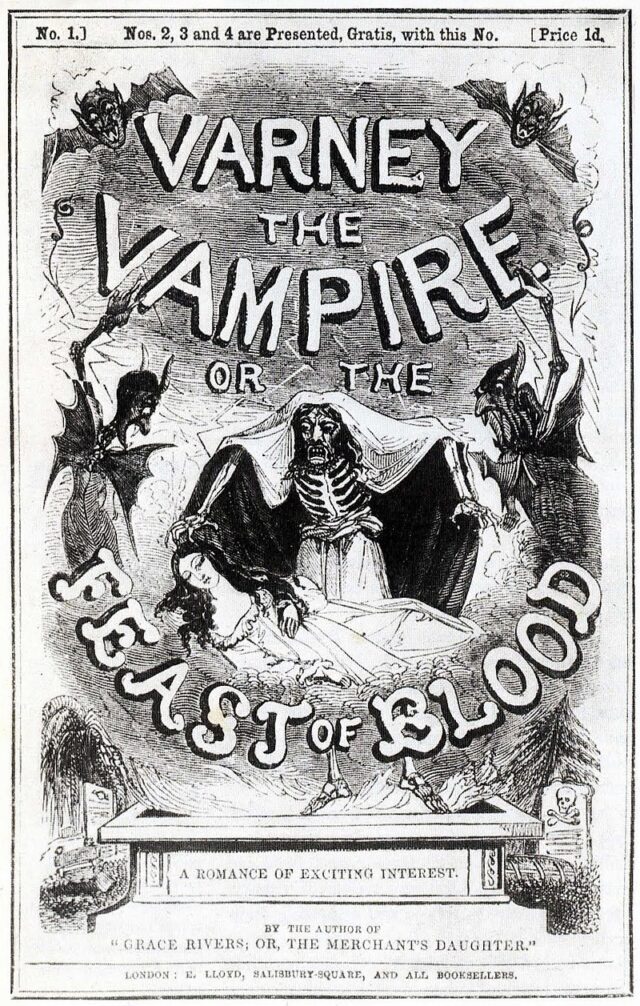From The British Library:
In the 1830s, increasing literacy and improving technology saw a boom in cheap fiction for the working classes. ‘Penny bloods’ was the original name for the booklets that, in the 1860s, were renamed penny dreadfuls and told stories of adventure, initially of pirates and highwaymen, later concentrating on crime and detection. Issued weekly, each ‘number’, or episode, was eight (occasionally 16) pages, with a black-and-white illustration on the top half of the front page. Double columns of text filled the rest, breaking off at the bottom of the final page, even if it was the middle of a sentence.
The success of highwaymen and gothic tales
The bloods were astonishingly successful, creating a vast new readership. Between 1830 and 1850 there were up to 100 publishers of penny-fiction, as well as the many magazines which now wholeheartedly embraced the genre. At first the bloods copied popular cheap fiction’s love of late 18th-century gothic tales, the more sensational the better, ‘a world,’ said one writer, ‘of dormant peerages, of murderous baronets, and ladies of title addicted to the study of toxicology [the study of poison], of gipsies and brigand-chiefs, men with masks and women with daggers, of stolen children, withered hags, heartless gamesters, nefarious roués, foreign princesses’.
. . . .
The first ever penny-blood, in 1836, was Lives of the Most Notorious Highwaymen, Footpads, &c., in 60 numbers. Highwaymen remained a favourite. Gentleman Jack was published over four years, without too much worry for historical accuracy or continuity. (One character was, rather carelessly, killed twice.) Dick Turpin was a great favourite. His story, and especially the time he (supposedly) rode the 200 miles from London to York overnight, was retold endlessly. In Black Bess; or, The Knight of the Road, Turpin was not executed until page 2,207.
The illustrations were an essential element, as much an advertising tool as art. One regular reader said, ‘You see’s an engraving of a man hung up, burning over a fire, and some … go mad if they couldn’t learn what he’d been doing, who he was, and all about him.’ It is not surprising, therefore, that one publisher’s standing instruction to his illustrators was, ‘more blood – much more blood!’
. . . .
Later, after highwaymen and then evil aristocrats fell out of fashion, penny-bloods found even more success with stories of true crimes, especially murders. And if there were no good real-life crimes current, then the bloods invented them. The most successful of them was the story of Sweeney Todd. The ‘Demon Barber’ first appeared in a blood entitled The String of Pearls, which began publication in 1846. Even before it reached its conclusion, it was adapted for the stage, setting the murderous barber, who killed his clients for his neighbour Mrs Lovett to bake into meat-pies, on the road to world fame.
Link to the rest at The British Library




I remember how a few authors embraced the ‘Dollar Dreadful’ moniker for our .99 e-books and made up our own ‘Pulp’ covers.
It was a lot of fun.
The “dime novels” which flourished in the US a bit later had a smorgasbord of writers, some of whom had a serious education.
Such terms from Westerns as “bite the dust” come straight out of Homer, where warriors “take the dust between their teeth”.
That’s putting your high school Greek to good use.
Thanks for the Greek perspective, Karen.
They are the ancestors of the gorier kinds of TV shows running currently.
I remember when Criminal Minds concentrated on finding the criminal, but have stopped watching since it became determined to show every bloody bit (even knowing it’s all faked, it turns my stomach). Focusing on the criminal in that way may be more exciting, but I liked the mental games better.
Every other show out there seems to try its best to outdo its rivals in gore.
Like the violence in video games, is this really good for humans?
But, but, what about the careful curation of fine literature?!? Real writers will be drowned under this, this, “tsunami of swill.” Where are the gatekeepers? My smelling salts, quick!
In all seriousness, it is easy to forget that adventure stories and “sensational” literature always has and always will appeal to a large set of readers.
Neat article, PG, thanks for finding it!
You’re welcome, TXRed.
Ah, the joys of genre fiction! Somehow the world has survived the education and entertainment of the great unwashed masses. LOL